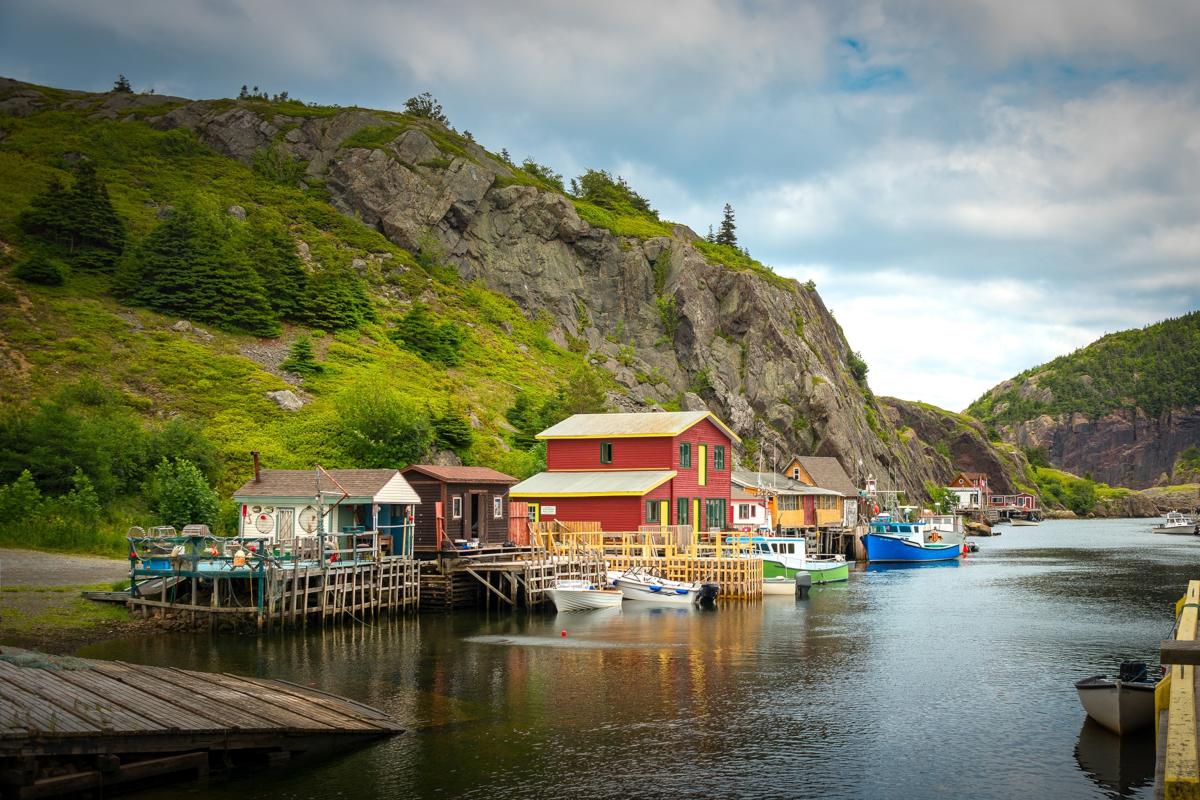This article is produced by National Geographic Traveler (United Kingdom).
You can tell a lot about a place by the way it greets its guests. In the city of St. John’s, the capital of Newfoundland, an island off Canada’s east coast, visitors are introduced to the city with a “screech-in” ceremony — a ritual that involves downing a shot of rum in a bar and reciting a local dialect before kissing a glazed codfish. The welcome — a nod to the days when fish were traded for Jamaican rum — sets the tone for a destination that’s geographically and culturally disconnected from the mainland, and where things are done a little differently.
St. John’s remote location on the eastern tip of Newfoundland has long been part of its windswept charm. In summer, it offers ringside seats for everything from migrating whales and puffins to colossal icebergs. But access to the city’s rugged coastline just got a less arduous trek in May 2024 with the launch of a direct WestJet flight from London, taking just five hours.
Less than four miles from St John’s International Airport, the city centre is easily accessible on foot. Since opening in 1984, the rustic Trapper John’s pub here has seen some 150,000 visitors screeching in, who leave with a certificate declaring them honorary Newfoundlanders. Nearby is George Street, a bustling strip of bars and pubs where old-fashioned folk music escapes through doorways. It’s just one of the many ways in which St John’s Celtic roots live on, from the lilting accent spoken locally to the sea shanties on display in The roomsThis museum tells the stories of local indigenous peoples, as well as the European settlers who worked in the local fisheries in the 16th century, when cod was king.
In recent years, St. John’s restaurant scene has stolen the spotlight as a new generation of chefs takes the lead. The leadership is Terre restaurant. Chef-owner Matthew Swift, who moved here from Ontario, has created a hyperlocal menu that sings of the sea, which happens to be visible through his dining room window. Choose the “let the kitchen cook for you” option and they’ll roll out the culinary red carpet with raw scallops drenched in brown butter and radishes grown in the on-site greenhouse.
The opposite bang is Carrying placea neighborhood cafe that has earned a reputation as one of the country’s most innovative restaurants for its fusion of Newfoundland and Southeast Asian cuisine, while being located close to Bent is a delicatessen that serves nose-to-tail delicacies, including crispy pig ears. Finish your meal with a stroll through Downtown, whose streets are lined with rows of wooden houses painted in a rainbow of colors. Legend has it that the colors guided fishermen back to their homes in the fog that hangs heavy in the air during the winter and spring.
On a clear day, a mile-long hike from Downtown to Signal Hill — crowned by a castle-like structure that received the first transatlantic wireless message in 1901 — is rewarded with scenes of pristine cliffs. For those who make the climb, The Battery Café offers a cozy pit stop for a cup of coffee with an optional drizzle of Canadian maple syrup. From the summit, follow the Ladies Lookout Trail, a wild path that winds for just over a mile through an eagle colony and down to the fishing harbor of Who saw. Quidi Vidi Brewery serves beer brewed with water from icebergs, with a view of the fishing boats floating peacefully around.
Keep your eyes peeled for moose along the side of the road on the nine-mile drive from downtown St. John’s to Cape Spear Lighthouse. Here, two lighthouses—the original built in 1836 and the other built in 1955—shine their steady beacons across the crashing waves from Canada’s easternmost point. And if you’ve made it all the way here, consider the longer trek from St. John’s to Fogo Island, 280 miles to the north, off Newfoundland’s east coast. Getting there involves a four-hour drive along stretches of coastline and through Canadian wilderness, then on to a ferry. A stay in Inn on Fogo Island a striking 29-room stilt retreat that has breathed new life into this former fishing community is worth the extra effort.
Three highlights not to be missed in St John’s:
1. Carrying place
The merger of two acclaimed Canadian chefs — Ross Larkin and his pastry partner Celeste Mah — has helped put St John’s on the culinary map. Dishes like snow crab drizzled with lemon mayo and banh mi salad are served in a relaxed dining room — or pull up a chair at the chef’s table to watch the kitchen in action.
2. Who saw
It’s easy to while away an afternoon in this quaint fishing village, set around a horseshoe-shaped wharf. Quidi Vidi Village Artisan Studios is the place to pick up crafts to take home, including ceramic sculptures of the region’s beloved puffins and hand-stitched quilts.
3. Inn on Fogo Island
With rooms starting from C$1,975 (£1,340) per night, a stay at this destination hotel is a once-in-a-lifetime luxury. Come for a deep dive into the island’s culture, with boat-building workshops or a sea voyage to fish for cod, followed by songs and stories around the campfire.
Published in the September 2024 issue of National Geographic Traveler (United Kingdom).
To subscribe to National Geographic Traveler (UK) magazine click here. (Only available in certain countries).



